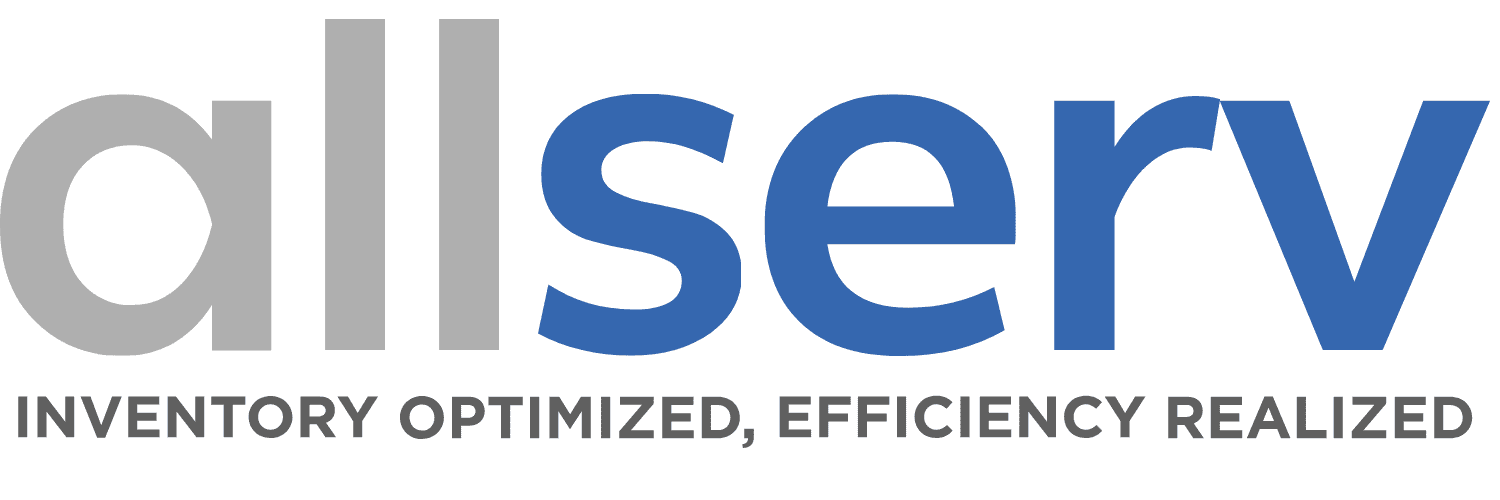 https://allserv.com/wp-content/uploads/2025/09/How-to-Standardize-MRO-Item-Descriptions-for-Better-Procurement.jpg
1250
2000
Abstrakt Marketing
https://allserv.com/wp-content/uploads/2025/06/ALLSERV-Logo-1.png
Abstrakt Marketing2025-09-12 13:33:042025-11-05 15:35:16How to Standardize MRO Item Descriptions for Better Procurement
https://allserv.com/wp-content/uploads/2025/09/How-to-Standardize-MRO-Item-Descriptions-for-Better-Procurement.jpg
1250
2000
Abstrakt Marketing
https://allserv.com/wp-content/uploads/2025/06/ALLSERV-Logo-1.png
Abstrakt Marketing2025-09-12 13:33:042025-11-05 15:35:16How to Standardize MRO Item Descriptions for Better ProcurementHow to Conduct a Successful MRO Inventory Audit
When it comes to maintaining efficient operations, few processes are as undervalued yet essential as the MRO inventory audit. Businesses depend on accurate inventory data to avoid stockouts, prevent waste, and plan maintenance with confidence. But without routine audits, errors build up quietly until they impact production schedules and profitability.
In this guide, we’ll explore why MRO inventory audits matter, the challenges organizations face, and the step-by-step strategies that lead to consistent, accurate results. Whether you’re trying to improve inventory visibility or reduce operational costs, this blog offers the practical roadmap you need to strengthen your audit process.
Why MRO Inventory Audits Matter
MRO inventory audits are more than a box-checking exercise—they’re a core pillar of proactive asset management. When performed regularly and correctly, audits ensure that what’s recorded in your system reflects what’s actually sitting on your shelves.
Enhancing Inventory Accuracy
Accurate inventory data enables better maintenance scheduling, smarter procurement, and fewer unexpected disruptions. Regular MRO inventory audits help uncover errors in tracking, labeling, and stock levels that accumulate over time, allowing teams to recalibrate before small issues become operational risks.
Reducing Excess Inventory and Waste
Without regular MRO inventory audits, businesses often overcompensate for uncertainty by overstocking. This ties up capital, consumes storage space, and increases the likelihood of carrying obsolete or redundant parts. Audits help identify which items are underused or duplicated so they can be removed, consolidated, or repurposed.
Financial and Operational Benefits
A structured audit process contributes to reduced emergency procurement costs, improved uptime, and cleaner financial reporting. It also simplifies compliance with internal and external regulatory requirements by maintaining traceable, up-to-date inventory records.
Common Challenges in the MRO Inventory Audit Process
Despite their importance, MRO inventory audits are often overlooked or performed inconsistently due to time, labor, or system limitations. Knowing where these pain points lie is the first step toward avoiding them.
Human Errors in Record-Keeping
Manual processes—like spreadsheets and handwritten logs—are highly prone to entry mistakes, missed updates, or untraceable changes. These small errors, compounded over time, lead to large discrepancies that undermine trust in your inventory system.
Difficulty Tracking Spare Parts Across Locations
For companies with multiple warehouses, tracking the same parts across different facilities is a major challenge. Inconsistent naming conventions, different storage policies, and siloed systems make it easy for duplicates and missing records to slip through the cracks.
Lack of a Standardized MRO Inventory Audit Process
Without a repeatable, clearly defined audit procedure, teams may perform checks inconsistently or overlook critical steps. This results in data that lacks reliability and can’t be compared across time periods or departments.
Resistance From Employees
If audits are perceived as disruptive or punitive, staff may resist participation or fail to prioritize accuracy. Building a culture that supports accountability and continuous improvement is key to successful audits over the long term.
How to Prepare for a Successful MRO Inventory Audit
Preparation is half the battle. Laying the groundwork with the right tools, roles, and expectations sets the stage for a smoother, more accurate MRO inventory audit.
Set Clear Goals and Objectives
Every successful MRO inventory audit begins with clarity. Before launching into physical counts or system checks, define the exact purpose of the audit. Are you trying to identify obsolete inventory, reconcile discrepancies across multiple warehouses, or establish a baseline for predictive analytics?
Clear goals help determine the scope, methodology, and metrics for success. They also ensure that every team member understands the “why” behind the audit, making participation more purposeful and aligned with broader business outcomes.
Create a Checklist for Efficiency
An MRO inventory audit without structure is an invitation for missed steps, inconsistent practices, and inaccurate data. A comprehensive checklist acts as your operational guide, detailing every task from verifying bin locations and checking part conditions to inspecting barcode readability and confirming item usage status. Tailor the checklist to your facility layout and business needs, and standardize it across departments to ensure uniformity. With a repeatable checklist in hand, audits become faster, more thorough, and less prone to error, even across different teams or locations.
Assign Roles and Responsibilities
Clear role definition is critical to audit accuracy and accountability. Assign experienced team members to lead specific aspects of the audit, such as physical counts, data validation, discrepancy investigation, and final reconciliation. Make sure everyone knows not only what they are responsible for but also how their work ties into the overall process.
When roles are vague or overlap, it leads to missed counts, duplicated effort, or conflicting data entries. Defined ownership streamlines the workflow and reduces the chance of errors.
Gather the Necessary Tools and Documentation
An MRO inventory audit is only as efficient as the tools supporting it. Equip your team with the right resources ahead of time, including barcode scanners, RFID readers, tablets for digital entry, updated inventory lists, safety gear (PPE), and audit-specific documentation like item master records or standard operating procedures.
If you’re using an inventory management system or CMMS, ensure team members have access and training to use it effectively. Being fully prepared minimizes downtime during the audit and enables your team to focus on accuracy rather than logistics.
Tired of chasing discrepancies in your inventory data? ALLSERV’s master data management services help eliminate duplication, standardize records, and ensure your audit efforts are built on accurate, reliable information.
Step-by-Step: How to Conduct an MRO Inventory Audit
Here’s how to conduct an MRO inventory audit that delivers real results.
Step 1: Review and Update Inventory Records
Before beginning any physical count, ensure that your digital inventory data is as clean and current as possible. This includes reviewing part numbers, updating item descriptions, confirming storage locations, and removing obsolete or decommissioned assets from the system. Flag inconsistencies for follow-up during the audit and identify any known issues that need verification. This step sets the stage for a more efficient and meaningful audit by reducing false discrepancies and making it easier to spot genuine inventory problems.
Step 2: Conduct Physical Inventory Counts
Organize your team to perform physical counts by designated zones, asset categories, or equipment types. Break down the count into manageable segments to avoid confusion or duplication. Use barcode scanners or mobile inventory tools wherever possible to speed up the process and ensure accurate data capture.
Scheduling the MRO inventory audit during slow production windows—such as nights, weekends, or planned downtime—minimizes disruptions and makes equipment and parts more accessible. Be sure to document any challenges encountered during counting, such as missing labels or damaged storage areas.
Step 3: Compare Physical Counts with Digital Records
Once the physical inventory is captured, reconcile it against the digital records from your inventory management system. Look for overages, shortages, and misplaced or misclassified parts. Pay special attention to high-value or fast-moving items, where inaccuracies can lead to major operational disruptions.
This comparison should be systematic, using reports or software tools that clearly flag mismatches. Be sure to involve both inventory and maintenance stakeholders in the review, as they can provide insights into how certain discrepancies may have occurred.
Step 4: Identify Discrepancies and Investigate Causes
Variances between physical and digital records shouldn’t be treated as isolated errors. Each discrepancy tells a story—maybe a part was moved without being logged, a receiving slip was never entered, or an employee misunderstood the labeling system. Investigate the root causes through conversations with involved personnel, review of past transaction logs, or analysis of item movement history. This step helps you shift from reactive corrections to proactive prevention, uncovering systemic issues that would otherwise go unaddressed.
Step 5: Reconcile Differences and Update Data
After confirming and investigating discrepancies, adjust your inventory system to reflect the verified counts. This includes updating stock quantities, part locations, and metadata like condition status or reclassification notes.
It’s critical to maintain a clear audit trail that documents what was changed, by whom, and why, especially for industries that must meet compliance standards or prepare for external MRO inventory audits. Establish data validation protocols and review updates with relevant departments to ensure accuracy and accountability.
Step 6: Implement Corrective Actions
An MRO inventory audit does more than just help you identify problems—it helps you fix them for good. Use your findings to improve inventory accuracy and refine operational processes.
For instance, if mislabeled parts were a recurring issue, invest in better labeling technology or provide refresher training. If certain discrepancies stemmed from outdated processes, revise your SOPs or upgrade your inventory software to reduce manual entry. Corrective actions can also include modifying reorder points, adjusting warehouse layouts for better visibility, or increasing cycle count frequency for high-risk items.
Best Practices for Ongoing MRO Inventory Audit Success
Audits shouldn’t be a once-a-year fire drill. They should be part of a continuous improvement cycle. Here’s how to keep accuracy high all year long.
Establish a Routine Audit Schedule
Set a formal schedule for full audits and mini audits by zone or category. Frequency will depend on the size of your inventory and the criticality of the parts, but monthly, quarterly, or semi-annual reviews are common.
Use Cycle Counting for Ongoing Accuracy
Cycle counting allows you to check small portions of your inventory more frequently, reducing the workload of full MRO inventory audits and catching issues early. Prioritize high-value or high-usage items on a more regular basis.
Train and Involve Your Team
Ongoing training builds awareness and accountability. Involve maintenance, procurement, and warehouse teams so everyone understands how their actions affect inventory accuracy and why audits matter.
Standardize the Process Across Departments
A standardized process reduces guesswork and improves cross-functional communication. Use common naming conventions, shared templates, and uniform reporting practices to keep everyone aligned.
Bring Order and Accuracy to Your MRO Inventory With ALLSERV
A well-executed MRO inventory audit does more than check compliance boxes. It strengthens accuracy, cuts waste, and lays the groundwork for smarter decisions. But without the right structure, tools, and support, even diligent efforts can fall short.
ALLSERV helps businesses build smarter, scalable audit programs that align teams, improve data integrity, and simplify inventory management. Whether you need to clean up your records or revamp your entire process, we’ll help you take control with confidence. Reach out today to get started.
Share This Post
More Like This
 https://allserv.com/wp-content/uploads/2025/09/How-to-Standardize-MRO-Item-Descriptions-for-Better-Procurement.jpg
1250
2000
Abstrakt Marketing
https://allserv.com/wp-content/uploads/2025/06/ALLSERV-Logo-1.png
Abstrakt Marketing2025-09-12 13:33:042025-11-05 15:35:16How to Standardize MRO Item Descriptions for Better Procurement
https://allserv.com/wp-content/uploads/2025/09/How-to-Standardize-MRO-Item-Descriptions-for-Better-Procurement.jpg
1250
2000
Abstrakt Marketing
https://allserv.com/wp-content/uploads/2025/06/ALLSERV-Logo-1.png
Abstrakt Marketing2025-09-12 13:33:042025-11-05 15:35:16How to Standardize MRO Item Descriptions for Better Procurement https://allserv.com/wp-content/uploads/2025/09/Workers-in-hardhats-in-warehouse-ooking-at-data_.jpg
1250
2000
Abstrakt Marketing
https://allserv.com/wp-content/uploads/2025/06/ALLSERV-Logo-1.png
Abstrakt Marketing2025-09-09 15:55:532025-11-05 15:35:17MRO Data Cleansing vs. Enrichment Explained
https://allserv.com/wp-content/uploads/2025/09/Workers-in-hardhats-in-warehouse-ooking-at-data_.jpg
1250
2000
Abstrakt Marketing
https://allserv.com/wp-content/uploads/2025/06/ALLSERV-Logo-1.png
Abstrakt Marketing2025-09-09 15:55:532025-11-05 15:35:17MRO Data Cleansing vs. Enrichment Explained https://allserv.com/wp-content/uploads/2025/09/Person-using-computer-warehouse.jpg
1250
2000
Abstrakt Marketing
https://allserv.com/wp-content/uploads/2025/06/ALLSERV-Logo-1.png
Abstrakt Marketing2025-09-09 15:38:442025-11-05 15:35:17The Value of MRO Data Cleansing for Your Business
https://allserv.com/wp-content/uploads/2025/09/Person-using-computer-warehouse.jpg
1250
2000
Abstrakt Marketing
https://allserv.com/wp-content/uploads/2025/06/ALLSERV-Logo-1.png
Abstrakt Marketing2025-09-09 15:38:442025-11-05 15:35:17The Value of MRO Data Cleansing for Your Business https://allserv.com/wp-content/uploads/2025/09/Workers-in-warehouse-looking-at-data-on-computer.jpg
1250
2000
Abstrakt Marketing
https://allserv.com/wp-content/uploads/2025/06/ALLSERV-Logo-1.png
Abstrakt Marketing2025-09-09 14:32:192025-11-05 15:35:18Why MRO Data Matters in Your Supply Chain
https://allserv.com/wp-content/uploads/2025/09/Workers-in-warehouse-looking-at-data-on-computer.jpg
1250
2000
Abstrakt Marketing
https://allserv.com/wp-content/uploads/2025/06/ALLSERV-Logo-1.png
Abstrakt Marketing2025-09-09 14:32:192025-11-05 15:35:18Why MRO Data Matters in Your Supply Chain https://allserv.com/wp-content/uploads/2025/08/Building-team-shake-hand-Success-agreement-project-building-construction.jpg
1250
2000
Abstrakt Marketing
https://allserv.com/wp-content/uploads/2025/06/ALLSERV-Logo-1.png
Abstrakt Marketing2025-08-20 16:56:122025-11-05 15:35:18The MRO Buyer’s Guide: Key Questions to Ask Before You Purchase
https://allserv.com/wp-content/uploads/2025/08/Building-team-shake-hand-Success-agreement-project-building-construction.jpg
1250
2000
Abstrakt Marketing
https://allserv.com/wp-content/uploads/2025/06/ALLSERV-Logo-1.png
Abstrakt Marketing2025-08-20 16:56:122025-11-05 15:35:18The MRO Buyer’s Guide: Key Questions to Ask Before You Purchase https://allserv.com/wp-content/uploads/2025/08/Factory-worker-checking-laptop.jpg
1250
2000
Abstrakt Marketing
https://allserv.com/wp-content/uploads/2025/06/ALLSERV-Logo-1.png
Abstrakt Marketing2025-08-14 16:08:472025-11-05 15:35:18How MRO Procurement Data Can Improve Inventory Acquisition
https://allserv.com/wp-content/uploads/2025/08/Factory-worker-checking-laptop.jpg
1250
2000
Abstrakt Marketing
https://allserv.com/wp-content/uploads/2025/06/ALLSERV-Logo-1.png
Abstrakt Marketing2025-08-14 16:08:472025-11-05 15:35:18How MRO Procurement Data Can Improve Inventory Acquisition https://allserv.com/wp-content/uploads/2025/08/Professionals-Inspecting-Jet-Engine-in-Aerospace-Hangar.jpg
1250
2000
Abstrakt Marketing
https://allserv.com/wp-content/uploads/2025/06/ALLSERV-Logo-1.png
Abstrakt Marketing2025-08-14 16:00:042025-11-05 15:35:19Key Mistakes to Avoid During MRO Inventory Acquisition
https://allserv.com/wp-content/uploads/2025/08/Professionals-Inspecting-Jet-Engine-in-Aerospace-Hangar.jpg
1250
2000
Abstrakt Marketing
https://allserv.com/wp-content/uploads/2025/06/ALLSERV-Logo-1.png
Abstrakt Marketing2025-08-14 16:00:042025-11-05 15:35:19Key Mistakes to Avoid During MRO Inventory Acquisition https://allserv.com/wp-content/uploads/2025/07/How-Leveraging-MRO-Data-Can-Save-Your-Business-Millions.jpg
1250
2000
Abstrakt Marketing
https://allserv.com/wp-content/uploads/2025/06/ALLSERV-Logo-1.png
Abstrakt Marketing2025-07-14 18:27:432025-11-05 15:35:19How Leveraging MRO Data Can Save Your Business Millions
https://allserv.com/wp-content/uploads/2025/07/How-Leveraging-MRO-Data-Can-Save-Your-Business-Millions.jpg
1250
2000
Abstrakt Marketing
https://allserv.com/wp-content/uploads/2025/06/ALLSERV-Logo-1.png
Abstrakt Marketing2025-07-14 18:27:432025-11-05 15:35:19How Leveraging MRO Data Can Save Your Business Millions https://allserv.com/wp-content/uploads/2025/07/Why-MRO-Inventory-Accuracy-Matters.jpg
1250
2000
Abstrakt Marketing
https://allserv.com/wp-content/uploads/2025/06/ALLSERV-Logo-1.png
Abstrakt Marketing2025-07-14 17:59:452025-11-05 15:35:20Why MRO Inventory Accuracy Matters (And How You Can Improve It)
https://allserv.com/wp-content/uploads/2025/07/Why-MRO-Inventory-Accuracy-Matters.jpg
1250
2000
Abstrakt Marketing
https://allserv.com/wp-content/uploads/2025/06/ALLSERV-Logo-1.png
Abstrakt Marketing2025-07-14 17:59:452025-11-05 15:35:20Why MRO Inventory Accuracy Matters (And How You Can Improve It)Stay Connected
Phone Number
+1 855 743 5272
Email
[email protected]
Services
Contact Us
Houston Office
1980 Post Oak Blvd, Suite 100, Houston, TX, 77056
Colombo Office
89 Galle – Colombo Rd, Colombo 00300, Sri Lanka
Prague Office
Na Perštýně 342/1, 110 00, Staré Město, Czechia


